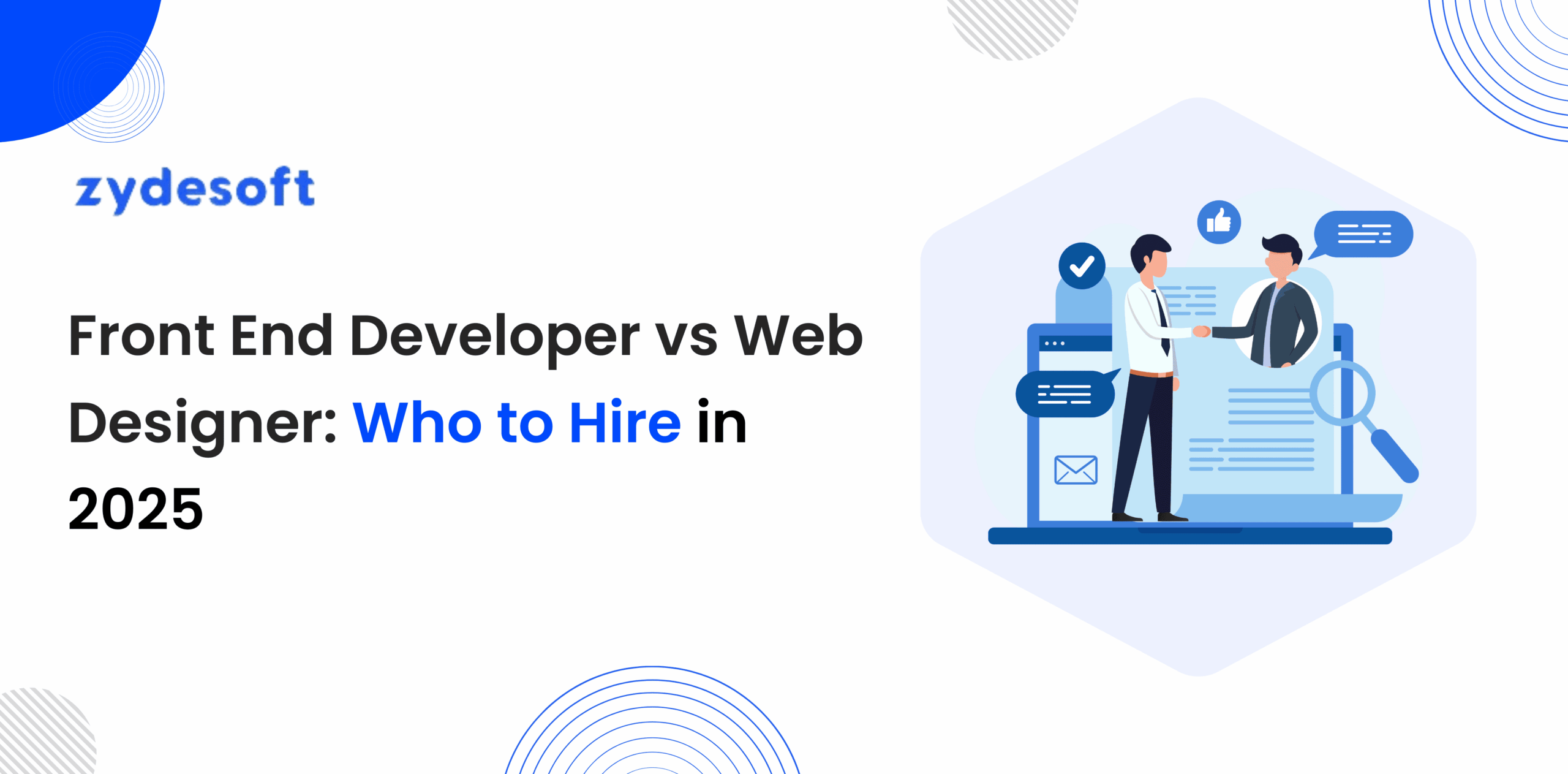
Confusion often arises between front end developers and web designers, but understanding their distinct roles is crucial for building effective tech teams. Each contributes differently to project delivery. For US companies leveraging staff augmentation, especially with Indian IT talent, distinguishing these roles directly impacts hiring success and project outcomes.
A web designer focuses primarily on the visual and user experience (UX/UI) aspects of a website or app. They create intuitive, appealing interfaces that guide users while maintaining brand consistency.
Front-end developers translate designs into functioning websites and web applications by coding user interfaces. They enable users to interact with sites seamlessly and responsively.
| Aspect | Web Designer | Front‑End Developer |
|---|---|---|
| Focus | Visual design and user experience | Coding and functionality implementation |
| Scope of Work | Layouts, wireframes, color, typography | Interactive UI, responsiveness, APIs |
| Skills Required | Design software, UX/UI principles | HTML, CSS, JavaScript, frameworks |
| Typical Outputs | Design files, prototypes | Functional websites and applications |
| Collaboration | Works closely with developers | Works closely with designers |
Web designers create designs and prototypes, which are handed off to front-end developers for coding. Clear communication during hand-offs is essential to preserve design integrity.
Both roles engage with responsive design and often use prototyping tools. Designers sometimes have basic coding skills, while developers may tweak design elements for functionality.
The rise of “unicorn” professionals who do both design and development is notable but rare. Knowing when to hire specialized talent versus hybrids depends on project needs and complexity.

Smaller teams or startups might prefer versatile professionals, while larger projects benefit from specialized roles to ensure quality.
Specialized experts streamline workflow, reducing iterations and launch times.
Indian IT talent offers access to both web designers and front-end developers. Proper screening tailored to each role ensures better matches.
Ensure strong communication via project management and collaboration tools. Establish clear hand-off processes and regular feedback cycles to align expectations.
Cost efficiency, a large talent pool, and overlapping work hours facilitate seamless collaboration.
Bridge differences with clear communication protocols, regular meetings, and cultural sensitivity training.
Ensure contracts protect intellectual property and comply with international laws to safeguard your projects.
Ready to scale your team with top Indian talent? Let’s talk!
US salaries for front-end developers and designers are significantly higher but Indian market rates offer cost-effective talent with growing expertise.
Demand is rising for UI/UX specialists and developers skilled in modern JavaScript frameworks and performance optimization.
With digital transformation accelerating, both roles remain critical. Skill overlap and role flexibility continue to grow.
Can one person do both jobs?
Yes, but it often depends on project size and complexity. Smaller teams may require hybrid skills, whereas larger projects benefit from specialization.
Which is better for startups?
Startups may prefer versatile hires initially but benefit from specialized roles as they scale.
How to ensure quality when outsourcing?
Use thorough screening, design and code reviews, clear documentation, and frequent communication.
Understanding the clear distinctions and overlaps between front end developers and web designers empowers companies to make informed hiring decisions, especially when augmenting staff with Indian IT talent. Clarifying roles optimizes project flow, reduces miscommunication, and accelerates delivery. Contact us to find skilled Indian web designers and front-end developers tailored to your project needs.